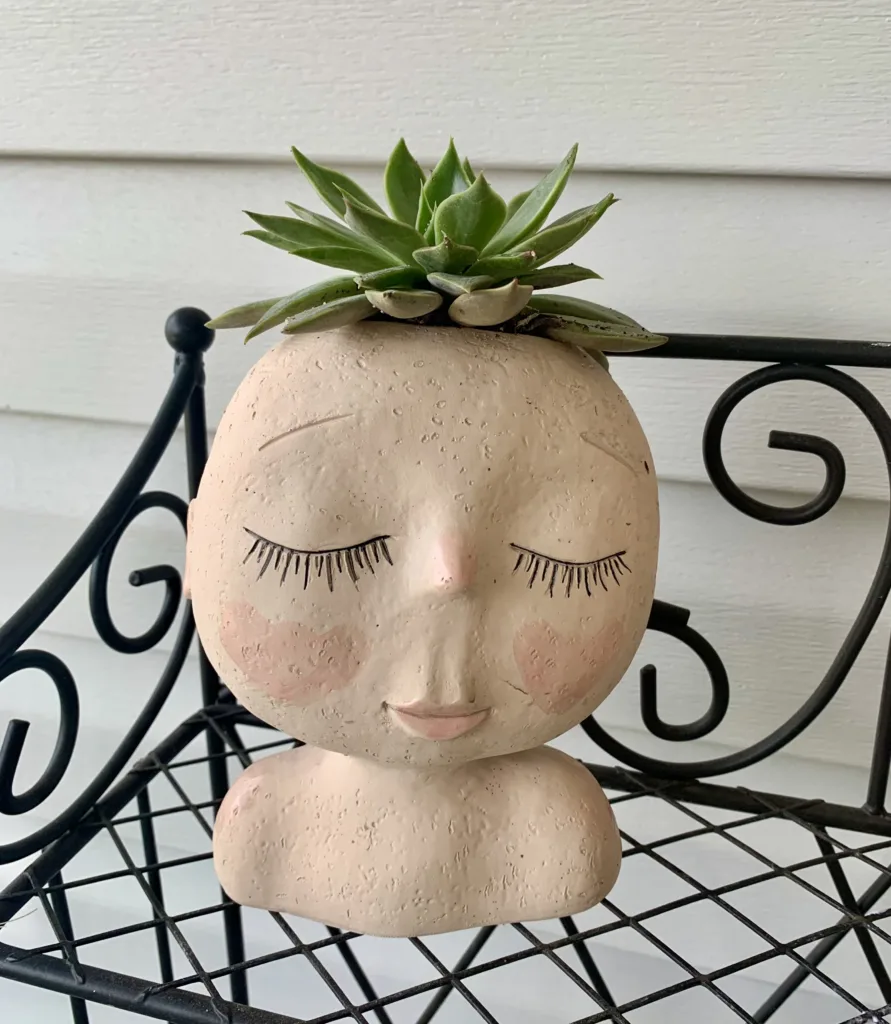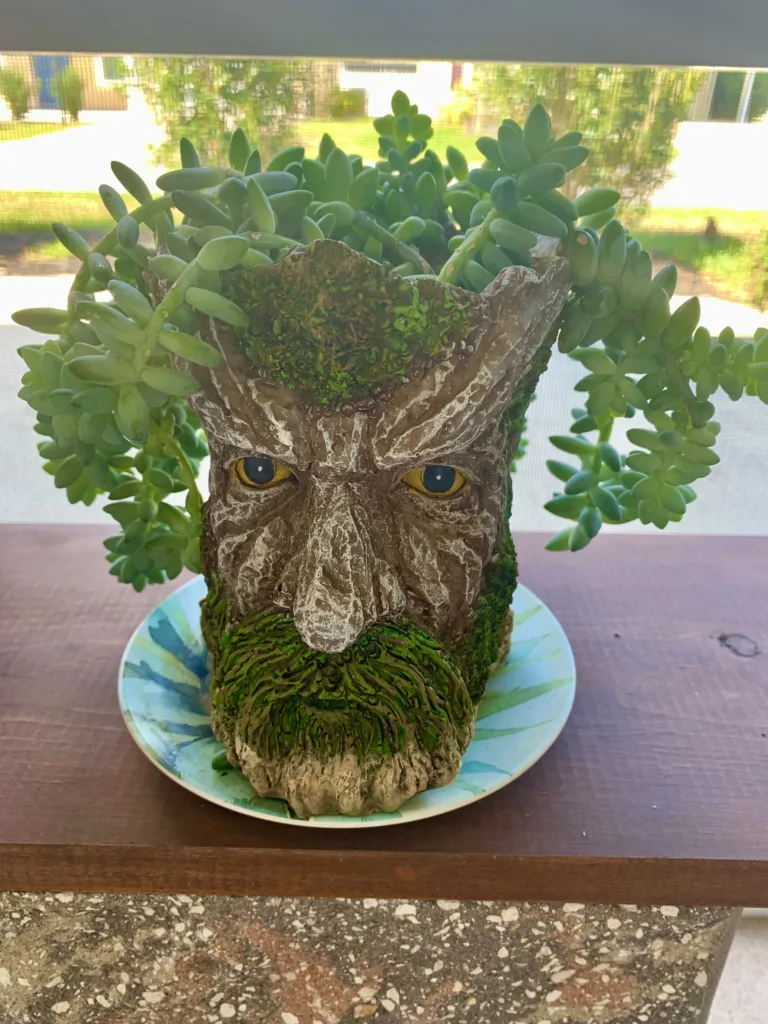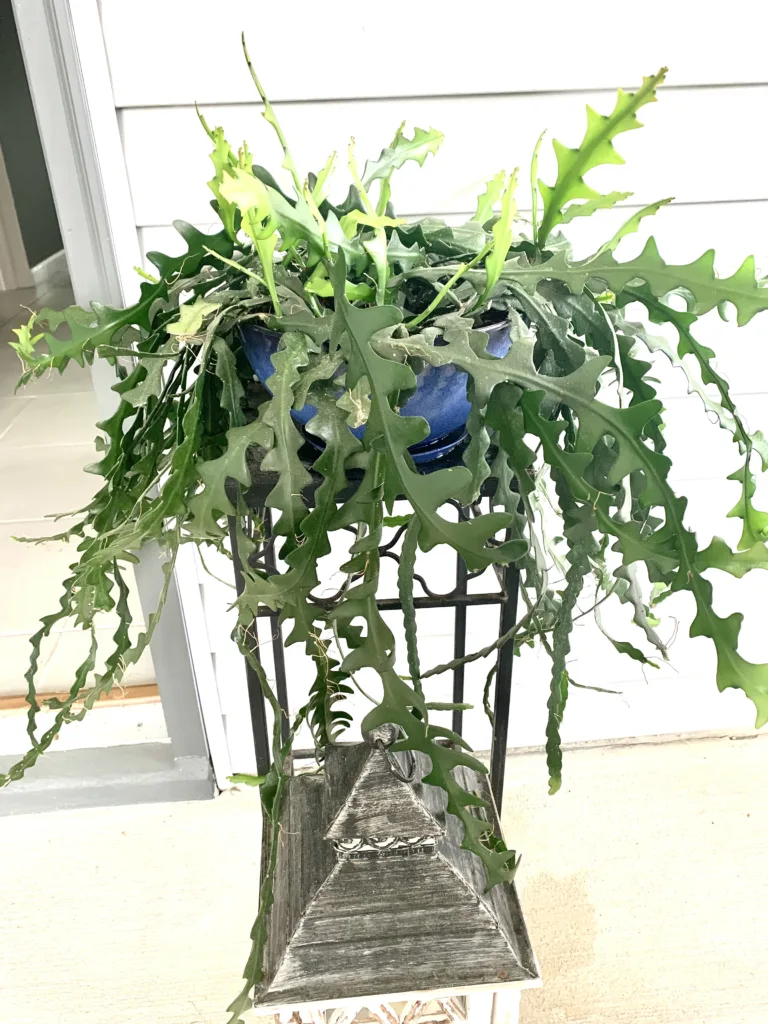Growing Succulents is easier than you think! Succulents are an incredibly popular and low maintenance way to add a touch of color and life to your garden. Whether you’re looking for a pop of color around your front door or an interesting houseplant, succulents are the perfect choice. Now that you know you want to grow succulents, let’s break down how exactly you can do it!
Gathering Supplies for Growing Succulents
The first step in growing succulents is to gather the supplies that you need. You will need potting soil, fertilizer, a container for your succulent (or multiple containers if you plan on growing more than one), and of course- the plant itself! If you plan on buying from a nursery, be sure to check for any pests that may have hitchhiked on the plant before taking it home with you.
Sunlight and Watering your Succulents
Succulents typically love full sun but they can also survive in part shade or partial sun. Just make sure their containers are placed close enough together so that they don’t become too hot or too cold. When watering your succulents, make sure not to overdo it – too much water can cause root rot and kill your plants! Succulents usually only need water once every 1-2 weeks depending on the temperature outside. It’s best to use tepid water when watering your plants – avoid using ice-cold water as this can shock them.
Grow Lights for Succulents
Succulents are known for their love of sunlight, but sometimes they may not be getting enough light from the natural sources available in your home. In these cases, grow lights can be a great solution to help your succulents grow and thrive.
When choosing a grow light, there are a few key factors to consider. Here are some of the best grow lights for succulents and what to look for when making your selection:
- LED grow lights: LED lights are a popular choice because they are energy-efficient, long-lasting, and provide the right spectrum of light for plant growth.
- Wattage: Depending on the size of your succulent collection, you may need a light with a higher or lower wattage. Generally, 25-50 watts is sufficient for a small to medium-sized collection.
- Distance and coverage: Make sure the light is placed at the right distance from the plants to avoid burning, and that it covers the necessary area. Be sure to read the direction of the grow light you get and they will instruct you on the distance.
- Timer: A timer can help ensure that your succulents are getting the right amount of light each day without overexposure.
Here are a few grow lights that are highly recommended for succulents:
- Spider Farmer SF-1000 LED Grow Light
- Phlizon Full Spectrum LED Grow Light
- Barrina Full Spectrum LED Grow Light
By selecting the right grow light, you can ensure that your succulents are getting the light they need to thrive, no matter the season or location of your home.
Potting Soil for Growing Succulents and Cactus
Succulents and cacti are plants that thrive in soil with excellent drainage. To provide succulents and cacti with the necessary drainage, it’s important to use a soil mix that consists of materials that hold minimal moisture.
Succulent potting soil mixes typically contain items such as sand, pumice and perlite. Adding sand to succulent potting soil is a great way to increase drainage. Sand helps ensure that the succulent’s roots are not submerged in water for too long, helping avoid root rot. Sand also encourages air circulation around the succulents’ roots which can help succulents thrive.
Another material to include in succulent potting soil is pumice. Pumice helps improve drainage and aeration, allowing succulents more access to oxygen for healthy root development. Additionally, pumice has a neutral pH balance which can be beneficial for succulents. Perlite is also a common material used in succulent potting soil mixes. Like sand and pumice, perlite has excellent drainage properties which helps succulents and cacti avoid root rot. Perlite is lightweight and can contain moisture, allowing succulents to stay hydrated.
By using a succulent potting soil mix with items like sand, pumice and perlite succulents and cacti can grow healthy and strong.
When selecting a succulent potting soil mix, it is important to look for one that is well-draining and contains the appropriate ingredients for succulents. By making an informed decision, succulent enthusiasts can enjoy their plants for years to come.
I find it best to experiment to what works for you in your climate and with the pots you are using. Here are just a few of my favorites. Succulent & Cactus soil mix, Miracle Grow Succulent mix, Miracle Grow Cactus mix, Harris Succulent & Cactus. And finally Organic Succulent and Cactus mix.
Fertilizing Succulents
If you want your succulent plants to really thrive, adding fertilizer is highly recommended! Fertilizers provide essential nutrients that help keep them healthy and strong. Choose a fertilizer specifically designed for cacti and succulents. These types of fertilizers are often low in nitrogen but high in phosphorus which helps promote blooming.
Make sure not to over fertilize your plants. Apply just enough so that there’s barely any visible residue left behind after application. Her are a few of my favorites – Miracle Grow Succulent Fertilizer, Easy Peasy Succulent Fertilizer. Or if you prefer pellets you can use The Grow Company Succulent and Cactus Fertilizer.
Pots for Succulents

Depending on the size you need or the style you want for your home or patio there are a multitude to choose from. For your tiny succulents these 2″ plastic pots are perfect. I have these small adorable owl and penguin planters and everyone comments on how cute they are!
If you want color this 8 pack of colorful Kinglake 4″ pots with saucers are great. My latest obsession has been pot head planters! They are all so unique and change with succulent or cactus you put in them! I even find myself talking to them often! I have my string of pearls in this Unie head planter. My burro’s tail in this Youfui head planter or as I call it my old man planter. I have recently added these beauties to my collection-Celapurora face planter and Aimebby face planter.
Easiest Succulents to Grow
Succulents are a great addition to any garden and make excellent houseplants. And even better, many of them are very easy to care for! Whether you’re a beginner or an experienced gardener, these succulents can add color, texture, and interest to your garden. Succulents are versatile and resilient plants that look great in any setting. With the right care and attention, they’ll be sure to bring a unique touch to your outdoor space. Here are some of the easiest succulents to grow:
Aloe Vera
Aloe vera is perhaps the most popular and well-known succulent. The fleshy leaves are filled with a gel-like substance that helps soothe burns and heal skin irritations, making it a great medicinal plant as well as a decorative one. Aloe vera is extremely low maintenance and easy to grow – all you need is some direct sunlight and occasional watering.
Jade Plant
The jade plant is another easy succulent to grow. Its glossy, oval-shaped leaves are what make this plant so popular. Jade plants require plenty of sun and occasional watering to thrive. They also look great in containers or as part of a dish garden.
Cactus
Succulents don’t always come in the form of plants – cacti are also considered succulents! Cacti come in a wide variety of shapes and sizes, making them ideal for any kind of garden. They prefer dry conditions and plenty of sun, so they’re perfect for hot climates. And best of all, they require virtually no maintenance. Just give them the occasional watering and you’re good to go!
Burro’s Tail

The burro’s tail is an easy-to-grow succulent that grows quickly in warm, dry climates. It has long trailing stems covered with small, oval leaves.
It produces delicate pink flowers when it blooms. This plant requires minimal care – just give it some bright, indirect light and occasional watering. My Burro’s Tail in what I call my Old Man pot is one of my favorites!
Easiest Succulents to Grow Indoors
Succulents are the perfect house plant for those who don’t have a green thumb or a lot of time to devote to their plants. Not only do they require minimal maintenance and attention. Succulents also come in many varieties that can add visual interest to any indoor space. The following succulents are some of the easiest to grow indoors.
Aloe Vera
Aloe vera is one of the most popular succulent plants and has many uses, both medicinal and ornamental. It prefers bright light but can also tolerate partial shade and needs well-drained soil to thrive. The pot should be shallow since over watering can cause root rot. Water once a week and wait until the soil is completely dry before watering again.
Snake Plant
Snake plants are an easy-to-care-for succulent that can tolerate low light conditions. This makes them perfect for indoor spaces with minimal natural light. Use a potting mix specifically designed for succulents. Then water it every two weeks or when the top inch of soil is dry.
Panda Plant
Panda plants are an interesting and unique succulent with furry leaves that can tolerate even lower light conditions than snake plants. It needs well-draining, sandy soil and should be watered when the top two inches of soil have dried out completely.
Jade Plant
Jade plants are a popular choice for indoor succulents and are easy to care for. They need bright light and should be watered when the top inch of soil is dry.
To care for all of these succulents, use a pot or planter with drainage holes that allows excess water to easily escape. Use soil made specifically for succulent plants, mix it with perlite (or something similar) to ensure that it drains quickly. Finally, make sure the plants get enough light and only water when the soil is completely dry. With a little extra attention, they should be easy to grow indoors and enjoy for years to come!
Propagating Succulents and Cactus
Are you a home gardener looking to expand your garden by propagating succulents and cacti? If so, you’ve come to the right place! With basic knowledge of gardening and a few simple supplies, virtually anyone can learn how to easily propagate these fascinating plants. In this blog post, we’ll go over the basics of propagating succulents and cactus plants using various methods. From seed starters to stem cuttings, we’ll provide all the information needed for successful propagation of these beautiful additions to any garden. So grab some dirt and get ready to start propagating!
Selecting Succulents and Cactus for Propagating
If you’re looking to get into propagating plants, selecting the right variety can be just as important as the techniques you use for successful growth. Succulents such as sedums and echeverias are some of the easiest plants to propagate, making them excellent choices for beginners. If you’re feeling a bit more adventurous, cacti such as prickly pears or old lady cacti are also simple to successfully divide into multiple specimens. With a bit of patience and the proper knowledge, propagation is a wonderful way to add variety to your garden with minimal effort.
How to Grow Succulents from Cuttings
For those looking to expand their succulent and cactus collection, propagating them at home can be an affordable and fun project. To begin, find succulents or cactus that have healthy stems with a few leaves – this will increase the chances of successful propagation. Next, use a sharp knife to carefully cut off an existing stem from the main succulent or cactus plant. After that, gently place the stem on some succulent soil in a pot and water regularly until you see new growth emerge. Be sure to supply adequate sunlight to your succulent before fertilizing with fertilizer made specifically for succulents and cactus plants. With patience and these simple steps you will soon have new succulents and cacti thriving in your garden!
1. Taking Succulent and Cactus Cuttings or Clones
Gardening is a great hobby that brings beauty and tranquility to the home. Taking cuttings or clones of plants greatly simplifies the process if you’re looking to expand your garden. Succulents, cacti and many other plants are especially ideal for taking cuttings because they easily regenerate into new growth and it doesn’t take long to see results. With a little bit of knowledge on how to care for them, clones will soon become great additions to your existing plants!
2. Preparing the Soil
When it comes to preparing the soil for succulents and cacti, it’s definitely worth taking your time. With a seemingly infinite variety of succulents and cacti that require different combinations of light, water, and fertilizer, you’ll want to do plenty of research if you plan to create the perfect environment for your succulent or cactus friend! That said, once you’ve figured out what makes your succulent or cactus happy – be it sand, soil, or even a pot made of bark – the next step is to prepare soil accordingly. It’s important to use well draining materials like gravel and perlite as they help conserve moisture as well as dissipate excess heat better; both of these are important factors in keeping succulents and cacti happy.
3. Planting & Watering the Cuttings
Succulents and cactus are popular plants for taking cuttings because the process of rooting them from a single leaf or stem is straightforward. Once the cutting has been taken, it should be planted in soil that drains well so that it won’t become waterlogged. It is also important to not overwater the cutting, as this could lead to root rot and other problems. To test whether or not a cutting needs water, lightly press your finger into the soil; if it feels moist then it doesn’t need to be watered just yet. With patience and proper care, the cutting will soon be established enough to transplant into its new home outdoors!
Caring for Your Propagated Succulents
Caring for your propagated plants doesn’t need to be intimidating! Cactus and succulents, in particular, are wonderful beginner plants. While other houseplants require frequent attention, these hearty plants can live long and healthy lives with minimal help from you. Cacti and succulents need a lot of indirect light so your windowsill is the perfect spot – plus, you’ll get the satisfaction of watching their new growth each season! They don’t need plenty of water – just make sure you wait until the soil is dry before you give them a light sprinkle. With some TLC, your propagated cacti and succulents will be thriving for years to come.
Common Challenges with Propagating Succulents & Cacti – Troubleshooting Tips
Growing succulents and cacti can be a great way to get your hands dirty and create a stunning living garden. But propagating these resilient plants isn’t always easy — pest infestations, watering issues, lack of light, or picking the wrong pot size are all common stumbling blocks. Fortunately, it is possible to troubleshoot these problems without having to give up on succulent gardening altogether. A few simple solutions can go a long way in terms of protecting succulents and cacti from pests, getting sufficient sunlight, controlling the amount of water used in each session, and being mindful of the size of the pot used for growth. Get creative, have patience, and your succulents will flourish in no time!
Succulent Gardener
Growing succulents and cacti can turn your living space into an oasis of flourishing foliage, bringing a refreshing touch to any home. Growing these plants at home offers a great opportunity to discover the unique characteristics they possess and master the craft of caring for them. Succulents and cacti don’t require too much watering or maintenance; with proper care, their wonderful colors and shapes will calm the senses and freshen up your environment. Take a dive into the world of succulent and cactus gardening to spruce up your space! Hope this was helpful, let me know if you have any questions. Happy Gardening!
Please be sure to check out my Gardening Blog Post Page for more tips on all types of gardening. Including Seed Saving, Seed Starting, Orchids, Water Gardening, Coldframe Gardening, Indoor Bulb Gardening, Hydroponics, Container Gardening, Mums, Herbs, African Violets, planting Bulbs, Flower Gardening, Vegetable and Fruit Gardening, Indoor Houseplants of all kinds, Cactus, Succulents, Hanging plants, Deer resistant plants and even Bird, Bee, Butterfly and Hummingbird Gardens!

